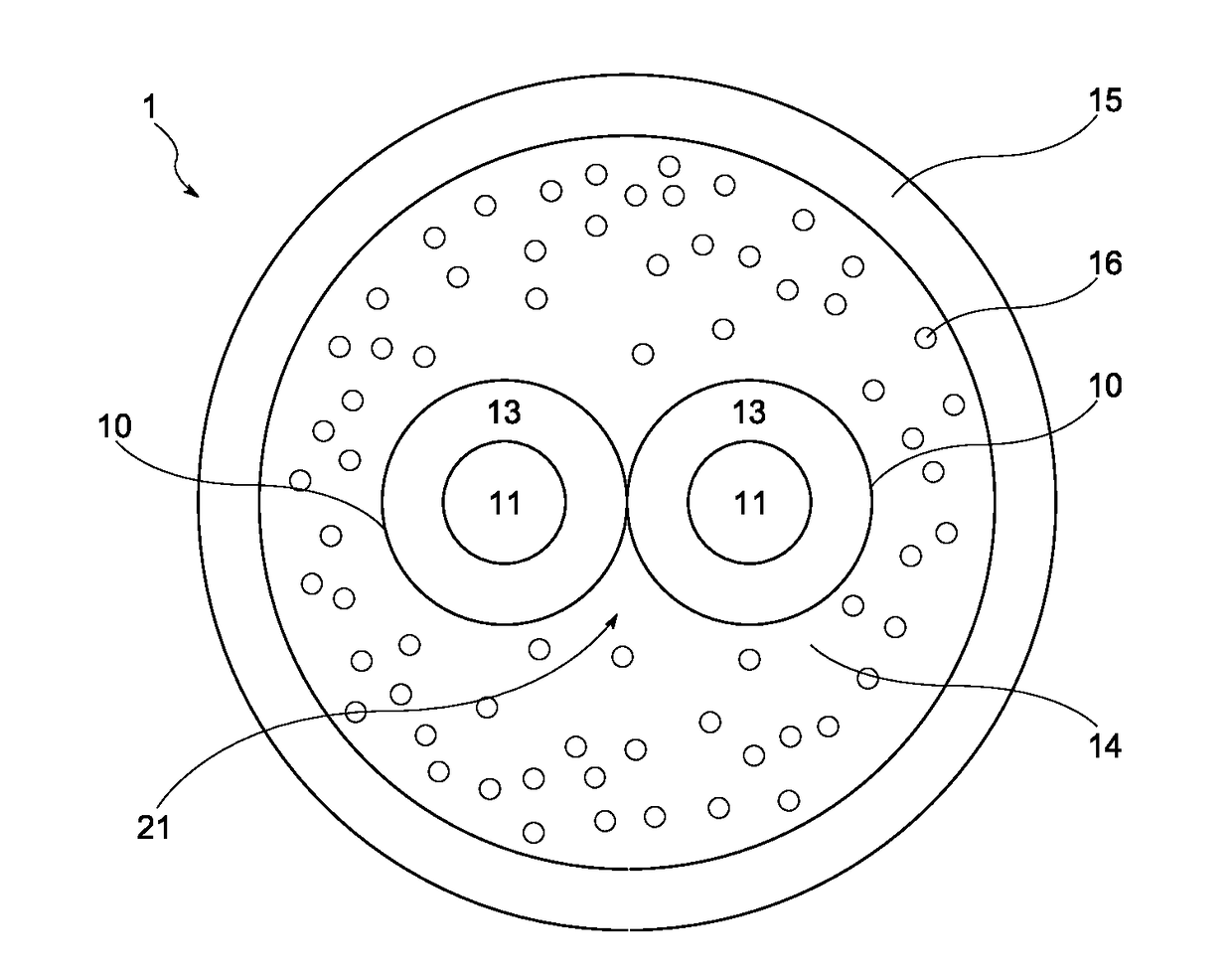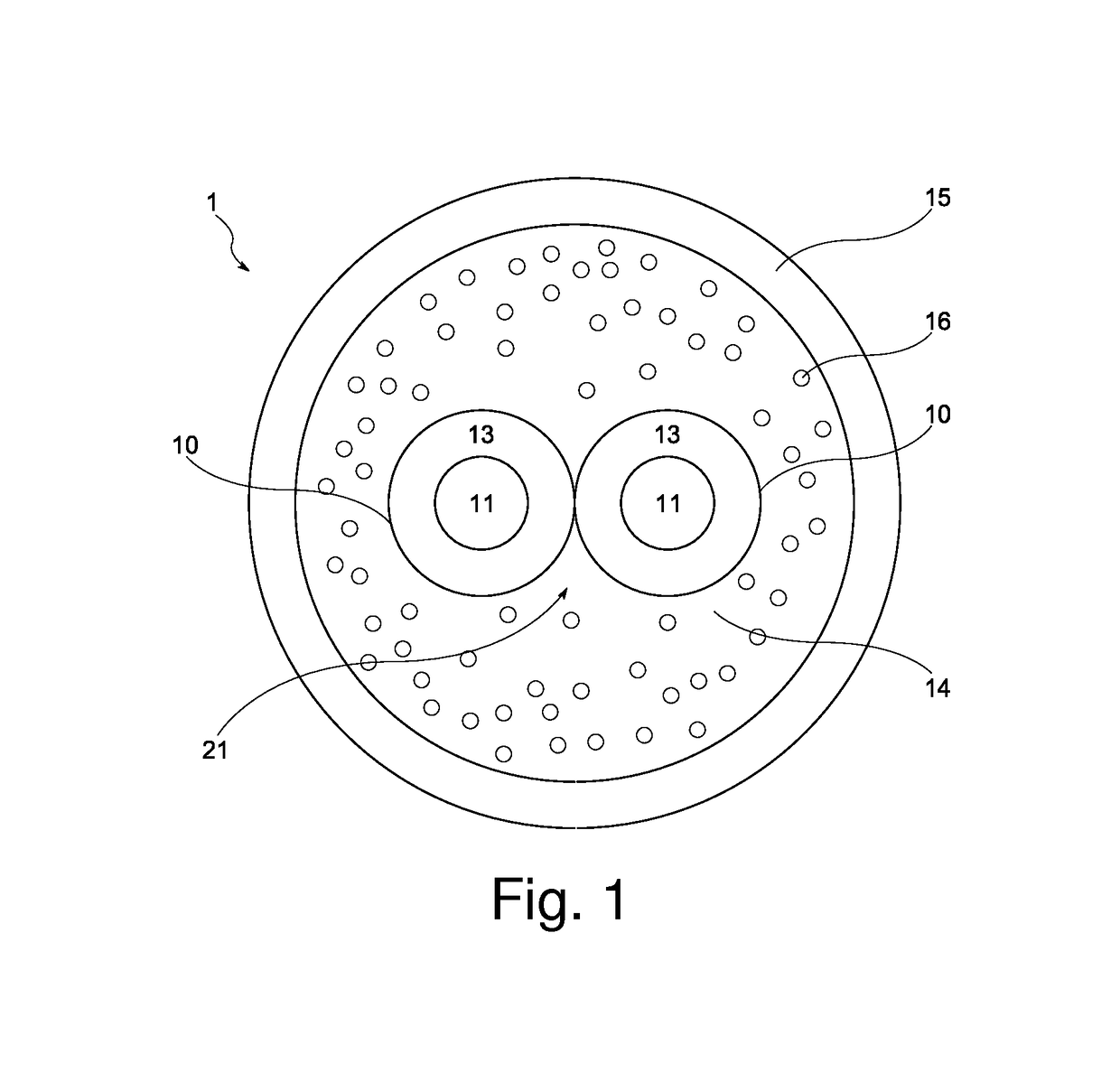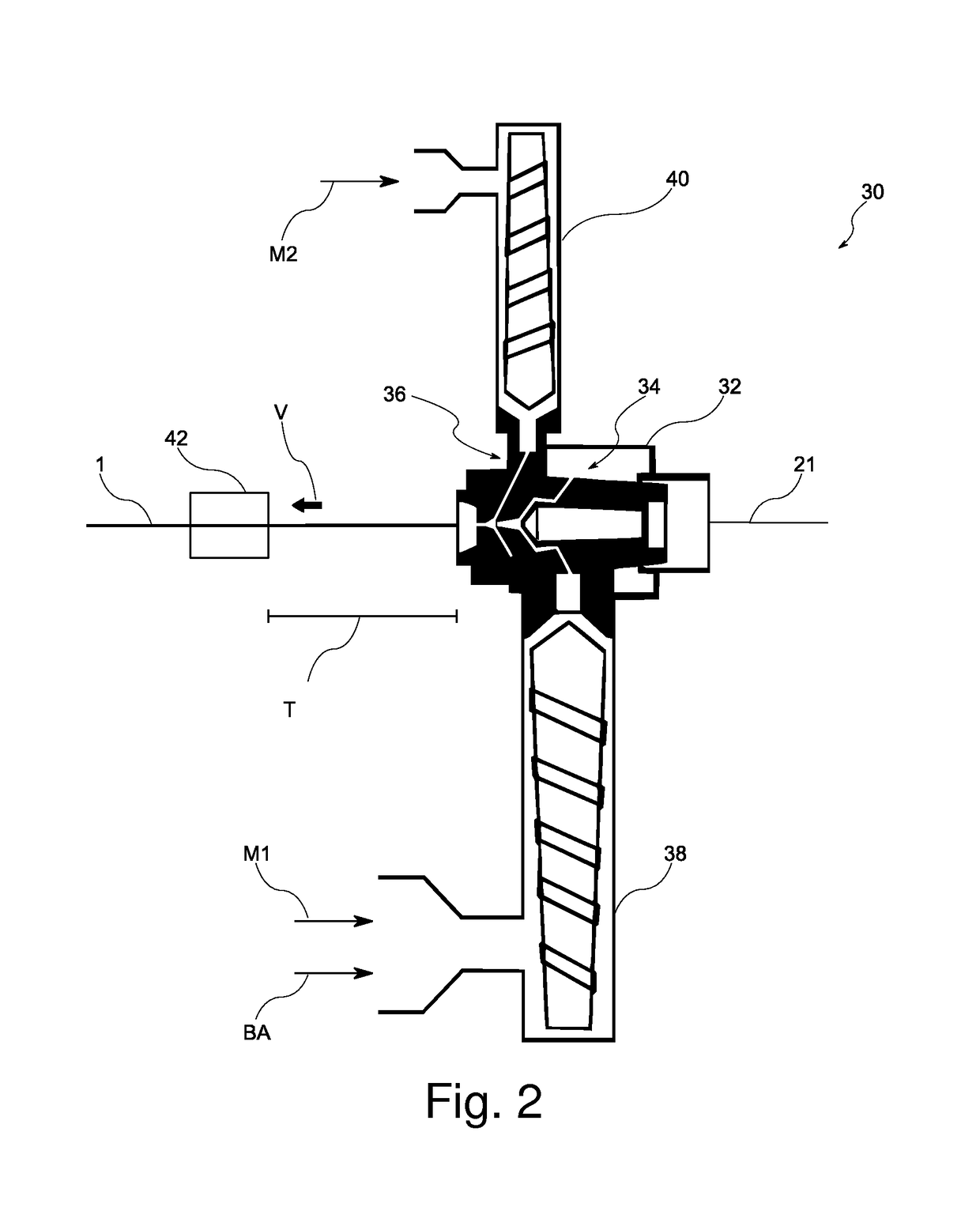Electrical cable for an appliance, appliance and method for producing an electrical cable
a technology for electrical cables and appliances, applied in the direction of cables, cable arrangements between relatively moving parts, insulation conductors/cables, etc., can solve the problems of short circuit between the conductors, the vacuum cleaner cannot receive electrical power, and the various insulation layers or sheathing layers of the cable can break, etc., to achieve the effect of reducing the mechanical stability of the cable, facilitating the extrusion of materials, and poor cable performan
- Summary
- Abstract
- Description
- Claims
- Application Information
AI Technical Summary
Benefits of technology
Problems solved by technology
Method used
Image
Examples
first example
[0062]A cable with a foamed inner sheath layer was manufactured with an extrusion velocity of V=120 m / min. The concentration of the active component was 0.25 wt. %. The elongation at break of the sheath was 250%, tensile strength at break was 14.5 MPa and the density of the overall sheathing was 1.27 g / cm3. The cell size was from the range 150 to 170 μm and the minimum skin thickness was 245 μm. The resultant cable surface had a smooth appearance without any defects.
second example
[0063]A cable with foamed inner sheath layer was manufactured with an extrusion velocity of V=120 m / min. The concentration of the active component was 0.15 wt. %. The elongation at break of the sheath was 249%, tensile strength at break was 14.7 MPa and the density of the overall sheathing was 1.26 g / cm3. The size of the cells in the inner sheath layer was in the range of 140 to 150 μm and the minimum thickness of the outer sheath layer, i.e. the skin was 228 μm. The resultant cable surface had a smooth appearance without any defects.
third example
[0064]A cable with foamed inner sheath layer was manufactured with an extrusion velocity of V=120 m / min. The concentration of the active component was 0.23 wt. %. The elongation at break of the sheath was 263%, tensile strength at break was 15.1 MPa and the density of the overall sheathing was 1.21 g / cm3. The size of the cells in the inner sheath layer was in the range of 120 to 200 μm and the minimum skin thickness was 228 μm. The resultant cable surface had a smooth appearance without any defects.
PUM
| Property | Measurement | Unit |
|---|---|---|
| equivalent diameter | aaaaa | aaaaa |
| diameters | aaaaa | aaaaa |
| thickness | aaaaa | aaaaa |
Abstract
Description
Claims
Application Information
 Login to View More
Login to View More - R&D
- Intellectual Property
- Life Sciences
- Materials
- Tech Scout
- Unparalleled Data Quality
- Higher Quality Content
- 60% Fewer Hallucinations
Browse by: Latest US Patents, China's latest patents, Technical Efficacy Thesaurus, Application Domain, Technology Topic, Popular Technical Reports.
© 2025 PatSnap. All rights reserved.Legal|Privacy policy|Modern Slavery Act Transparency Statement|Sitemap|About US| Contact US: help@patsnap.com



